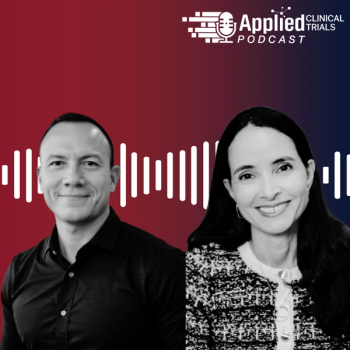
- Applied Clinical Trials-07-01-2011
- Volume 20
- Issue 7
Transforming R&D Through Open Innovation
Collaborative communities may hold the key to transforming a half-century's old R&D paradigm.
Strategies being implemented by pharmaceutical and biotechnology companies to improve innovation output, increase success rates and operating efficiency, with few exceptions, share a fatal flaw: They hold the current R&D paradigm—formed more than 50 years ago—as the platform in which their strategy and tactics will unfold and as the basis from which change can be facilitated. These strategies are falling far short of their intended impact. The closed, insular, compartmentalized, and sequential approach to pharmaceuticals innovation is clearly not working.
Kenneth A. Getz
Research professionals widely acknowledge a bleak future for status quo drug development. Most can recite the conditions that are causing modest anxiety in some professionals, deep depression in others: market conditions are ominous with soft global consumer demand; intense pricing pressure; an estimated $125 billion in revenue at risk due to patent expirations over the next three years; and new drug launches expected to replace less than 40% of those lost sales.
R&D conditions have their perennial problems with a twist. Global drug pipelines continue to grow steadily (5%) while the cost to develop these drugs is growing at a faster rate (9 to 10%) annually; success rates remain low with less than 20% of drugs that enter clinical testing making it through regulatory approval; the usual seven and a half to eight year development cycle time has not been declining; and—here's the twist—more than 15,000 R&D jobs in pharmaceutical and biotechnology companies have been eliminated since the third quarter of 2008.
Ineffective strategies
Development sponsors have been pursuing a variety of strategies in anticipation of this bleak operating environment. These strategies have not been transformative. In many respects, these strategies have made conditions worse.
Mergers and acquisitions as well as in-licensing transactions, for example, have been aggressively pursued during the past five years in an attempt to increase R&D output and diversify product portfolios. The results of these transactions appear to have had the unintended consequence of increasing workload while diverting capital to absorb operations and to fund further consolidation. Downsizings and an associated increase in traditional outsourcing has been a prevalent strategy that companies have pursued to lower their fixed costs while handling the steadily growing volume of R&D activity.
Another strategy has been to collect more data and, in some cases, to adopt more flexible protocol designs. The results of these measures have unintentionally increased the scientific and operating complexity of R&D programs and, in turn, have contributed to the rising cost of drug development. The growing placement of clinical trials in countries throughout the world has also introduced new operating complexities and costs as these trials are widely dispersed throughout countries with limited infrastructure and clinical research experience.
A host of technology- and Internet-based solutions such as electronic data capture systems, clinical trial management systems, and social networking, have been implemented during the past decade with the hope of addressing specific areas of inefficiency in clinical trials. Many of these technology solutions have optimized specific areas and practices, but not the overall innovation process. Their impact has been limited.
The "golden" era when select drug approvals generated ample return-on-investment to cover the high cost of R&D successes, failures, and long and inefficient cycle times, while delivering handsome profit margins has come to an end. Legacy R&D processes and function structures cannot be optimized indefinitely. New, transformative approaches to innovation are essential to the long-term viability of the pharmaceuticals industry. One such approach— "open innovation"—has been quietly gestating for more than two decades and is now poised for rapid adoption. Growing receptivity to more integrated outsourcing models and the increasing accessibility of globally dispersed, highly experienced, professionals have been major drivers of this evolutionary change.
Open-community innovating
Open innovation turns the traditional sequential and siloed approach to pharmaceutical development on its head. Instead, it relies on flexibility, coordination, and integration among a diverse collective of internal and external parties, each contributing their core competencies. Successful open innovation is about sourcing and leveraging expertise wherever it can be found and sharing knowledge and information as freely as possible. This approach stimulates highly motivated teams reminiscent of collegial public-private interactions that were once prevalent. However, open innovation now relies heavily on leading technologies to share data and create collaborative working environments; shared governance and operating procedures; and shared operating risk. In theory, open innovation holds great promise in shortening discovery and development cycle times, reducing R&D costs, and improving success rates.
Examples of open innovation—some targeting a specific process or function, others touching entire research programs—can be found throughout the drug development enterprise. Virtual drug development companies, although historically rare, are analogs for independent communities of scientists and service providers collaborating openly while being managed by a central source of capital and leadership. Investigator-initiated clinical trials possess characteristics of open, flexible, and integrated innovation. In these relationships, physicians in academic and private practice settings engage sponsors to support small studies of approved drugs for off-label uses. These clinical trials draw together a diverse community to share insights and set research agendas.
The Clinical Data Interchange Standards Consortium and open source clinical software are examples of diverse communities collaborating actively to develop standardized models of clinical data sharing, data capture, and management. The NIH's Cancer Biomedical Informatics Grid, another example, has sought to engage a diverse community of scientists and practitioners to share data and collectively develop new approaches to accelerate the detection, treatment, and prevention of cancer.
Numerous patient groups have formed alliances over the years to build diverse communities of scientists, practitioners, patients, and their families. These patient groups often raise research funding from their membership, set the research agenda, identify and engage professionals and their own patient membership to participate in the research, and establish collaborative relationships with industry.
Sourcing core competence
Single and multi-functional service provider arrangements and integrated alliances have become widespread among mid-sized and large pharmaceutical and biotechnology companies. These partnerships reflect key characteristics of open innovation—sponsors are sourcing non-core competencies under arrangements where governance, operating procedures, and systems are shared and integrated. CRO's assume operating risk for the function or entire program being outsourced.
Numerous multi-company and public-private consortia have also formed during the past seven to 10 years. These collaborative communities demonstrate drug developers' growing receptivity to sourcing research interests among the most capable internal and external parties, providing funding and sharing retrospective and prospective data to identify new drug candidates and stratified patient populations. Examples include Enlight Biosciences—a consortia founded by J&J, Lilly, Merck, Novartis, and Pfizer—a venture that identifies and arranges early R&D for promising leads and then licenses or sells them to the founding companies; the Alzheimer's Disease Neuro-imaging Initiative and the Coalition Against Major Diseases, two consortia made up of major pharmaceutical companies, government researchers, patient groups, and academia teaming up to identify and validate biomarkers and review data on failed compounds.
Taken together, these examples of open innovation make it easy to envision drug development programs managed by diverse teams of professionals and patients. Major pharmaceutical and biotechnology companies provide the resources, regulatory expertise, infrastructure, and facilitation capabilities; academic research centers provide basic research and translational medicine capabilities; small biotechnology companies, pharmaceutical companies, and select CROs provide innovative discovery and early development capabilities; CROs and investigative sites provide clinical research operating and execution capabilities; and patient groups help set the most relevant research agendas and volunteer to participate in studies.
New skills and challenges
Open innovation requires a delicate balance of structure around flexible, autonomous agents. The sponsor must provide strategic and mission-critical decisions, scientific and operating leadership, resources, and infrastructure. Collaborative energy, investment capital, governance, systems, processes, and accountability must be shared.
Open innovation models face challenges that must be anticipated and managed. Based on examples from other industries, collaborative teams run the risk of having a marginal impact if they are under resourced or they lack commitment from certain partners. Legacy approaches, and cultural baggage including high aversion to risk and sharing proprietary information can interfere and harm the process. Many open innovations begin with a short burst of collective energy followed by a longer, less active period. Select members of collaborative teams may receive disproportionate credit while others are not adequately recognized for their contribution. Effective open innovation will no doubt take time, careful assessment, and continuous improvements.
The current R&D paradigm is obsolete and transformative change is essential. Open innovation represents a most promising opportunity to improve success rates, lower costs and cycle times while addressing 21st century global health needs with the most informed and relevant therapies.
Kenneth A. Getz MBA, is a Senior Research Fellow at the Tufts CSDD and Chairman of CISCRP, both in Boston, MA, e-mail:
Articles in this issue
over 14 years ago
Applied Clinical Trials Digital Edition - July 2011over 14 years ago
Recruiting Diabetes Subjectsover 14 years ago
Eyes Play a Focal Role in Researchover 14 years ago
Fighting for Territory and Funding in Europeover 14 years ago
Cloud Computing Efficiencyover 14 years ago
Best Practice for Clinical Monitoringover 14 years ago
Personalized Medicine Developmentover 14 years ago
Italian Regulator Prepares for Europe's Top Jobover 14 years ago
Value of Time and Moneyover 14 years ago
Biosimilars Development Raises Research QuestionsNewsletter
Stay current in clinical research with Applied Clinical Trials, providing expert insights, regulatory updates, and practical strategies for successful clinical trial design and execution.






.png)



.png)



.png)
.png)
